Yesterday, the Federal Reserve released the latest, August, data on consumer credit which rose by $16 billion in the month, below the $19.5 billion expected, consisting of a $4 billion increase in credit card debt, and $12 billion in non-revolving, or auto and student loans, which at a combined total of $2.55 trillion now account for 73% of total U.S consumer credit.
The combined total monthly increase was the lowest since February on the back of a slowdown in non-revolving debt, while the increase in revolving credit was the weakest since May.
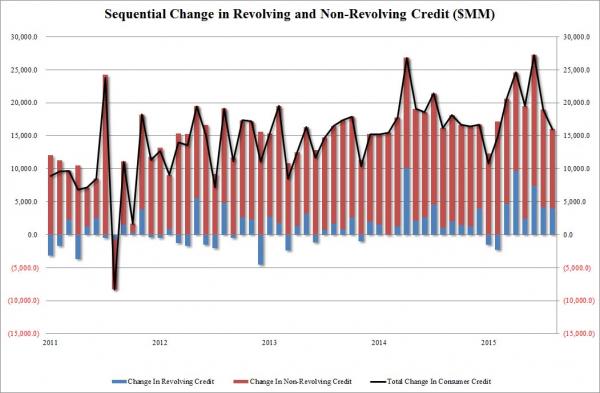
And while the headline number was uninspiring, focusing on what has been the biggest source of consumer spending in recent years, namely auto and student loans reveals the following interest charts.
First, only one word can describe the chart of total non-revolving credit: parabolic.
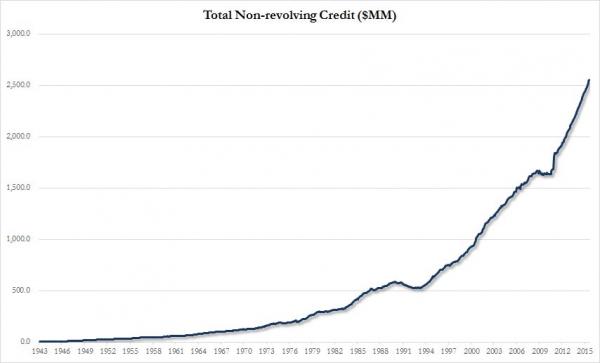
Second, while it will come as no surprise to anyone that government student loans, which surpassed $1 trillion over 3 years ago, continue soaring…
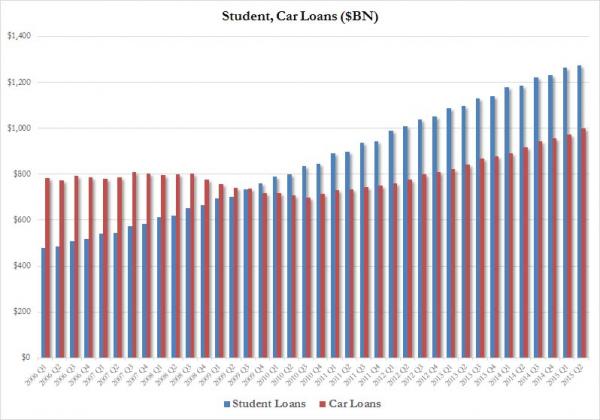
and are now funded entirely by the government…
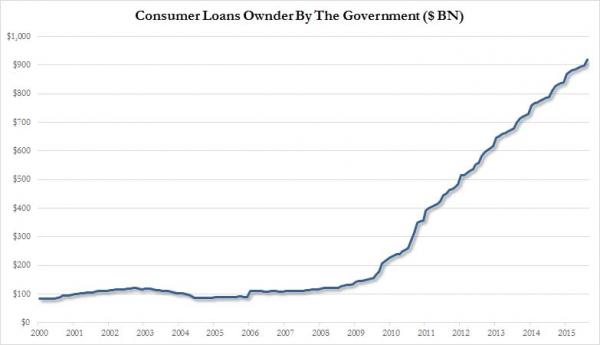
… it is auto loans where the real action is.
In fact, as the following chart shows, after langushing between $70 and $800 billion in the second half of the last decade, since Q2 2010 US auto loans have been on an absolute tear, and have increased by over 40% in the past five years alone, to just shy of $1 trillion as of June 30!
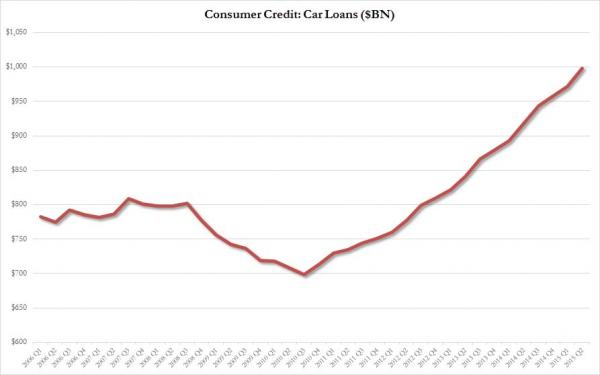
This means that as of this moment both auto and student loans are well above the $1 trillion mark. It also explains why as most other parts of the US economy continue to stagnate, the US auto sector remains the only bright spot in an otherwise dreary landscape.
The flipside, of course, is that once (or rather if) rates eventually rise, and banks start demanding higher interest payments for all new car loans which have become the only source of incremental buying power, that will be the day one can finally kiss the US auto golden age, propped by some $300 billion in debt (not to mention a couple of government bailouts to boot) in the past 5 years, goodbye.













Leave A Comment